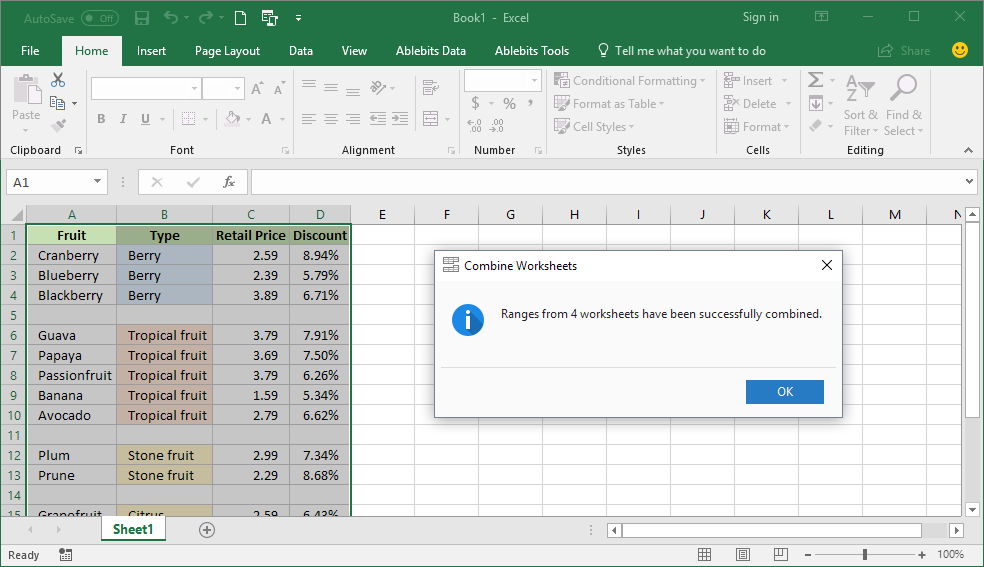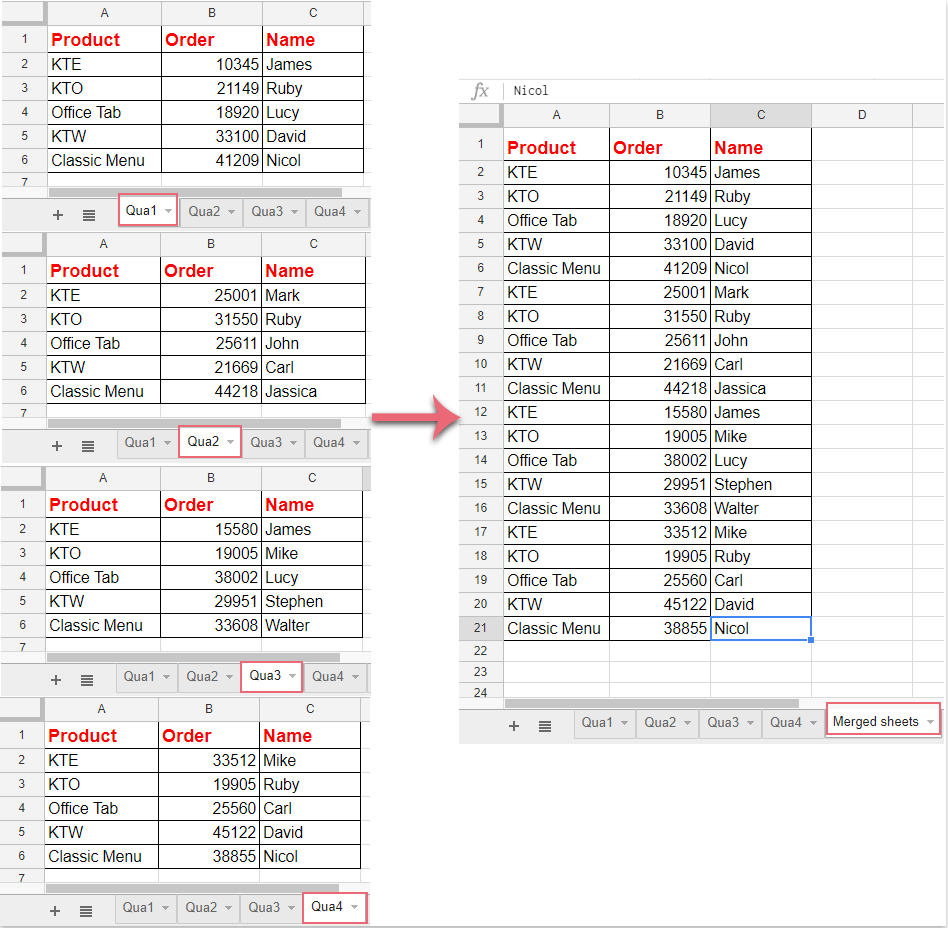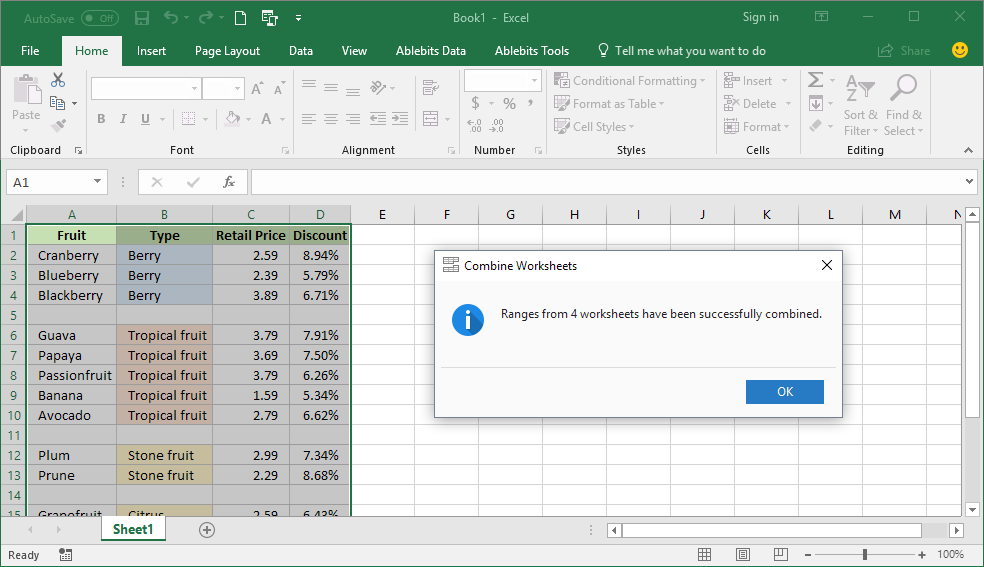5 Ways to Merge Excel Sheets into One

Merging Excel sheets into one can be incredibly useful for data analysis, reporting, or simply for better data organization. Whether you're combining sales data from different regions or consolidating project updates, understanding how to merge Excel sheets effectively can save time and reduce errors. Here, we explore five different methods to accomplish this task, ensuring you can choose the one that best fits your needs.
Method 1: Using Excel’s Built-in Functions

Excel provides several built-in functions to merge data from multiple worksheets or workbooks:
- Consolidate Data: Go to
Data > Consolidate. Here you can select functions like Sum, Average, Count, etc., to consolidate data from different sheets into one. - VLOOKUP or INDEX/MATCH: These functions are useful for merging data when the sheets share a common key (like an ID number or name).
🌟 Note: The Consolidate function can link to external files, making updates in source files automatically reflect in your merged sheet.
Method 2: Power Query

Power Query, available since Excel 2010, offers advanced data manipulation capabilities:
- Load the sheets into Power Query from
Data > Get Data > From File > From Workbook. - Use the Append Queries to stack multiple sheets vertically.
- Apply transformations like sorting, filtering, or combining data.
📌 Note: Power Query can handle large datasets efficiently, making it ideal for complex merging tasks.
Method 3: VBA Macros

If you’re comfortable with VBA, writing a macro can automate the merging process:
- Open the VBA editor with
Alt + F11. - Write a macro to loop through all sheets in a workbook or across workbooks to merge data into a single worksheet.
- Implement error handling and range checks for robustness.
Method 4: Third-Party Tools

There are several external tools and add-ins available that can simplify the merging process:
- Tools like Ablebits Data Merge, Merge Excel Files, or Kutools for Excel.
- These often provide user-friendly interfaces for merging with options like matching rows, removing duplicates, etc.
Method 5: Manually Copying and Pasting

While not the most efficient for large datasets, manual merging works well for:
- Small datasets where you can manually review data integrity.
- Situations where data structures vary significantly between sheets.
- Using Paste Values to avoid unintended references or formatting issues.
⚠️ Note: Be cautious with this method; mistakes in copying can lead to data misalignment.
Additional Considerations

When merging Excel sheets, keep the following points in mind:
- Backup your data: Always have a backup of your sheets before merging to prevent data loss.
- Header Row Consistency: Ensure headers match across sheets to avoid confusion.
- Data Validation: Check data integrity post-merge to avoid errors.
In summary, merging Excel sheets into one can be approached in several ways, from using Excel's built-in functions to leveraging external tools or writing your own VBA scripts. Each method has its strengths, tailored to different needs, data sizes, and the user's technical proficiency. By choosing the right method, you can streamline your data management process, ensuring efficiency and accuracy in your data handling. Whether it's through simple copy-pasting, powerful tools like Power Query, or custom scripts, the key is to select the technique that aligns with your specific data merging requirements.
What’s the difference between Consolidate and VLOOKUP for merging data?

+
Consolidate function is used to combine data from multiple ranges and create a summary in one place. It can use various functions to summarize the data (e.g., Sum, Count, Average). VLOOKUP or INDEX/MATCH, on the other hand, are lookup functions that help merge data based on a common key. They retrieve data from one sheet to match with another based on specified criteria.
Can Power Query handle different file formats?

+
Yes, Power Query can load and merge data from various file formats including Excel, CSV, JSON, XML, and even connect to databases or web sources.
Is it necessary to know VBA for merging Excel sheets?

+
No, it’s not mandatory. There are several built-in and third-party solutions for users who aren’t comfortable with VBA programming. However, knowing VBA can provide more flexibility and automation for complex merging tasks.